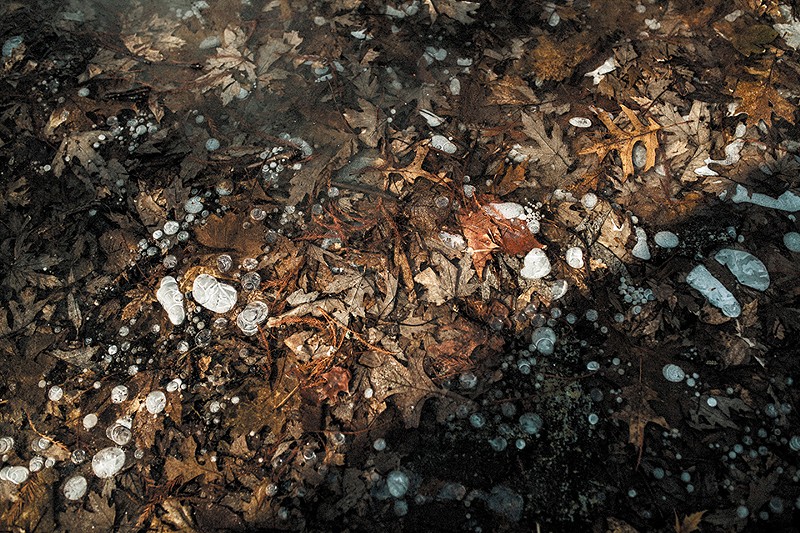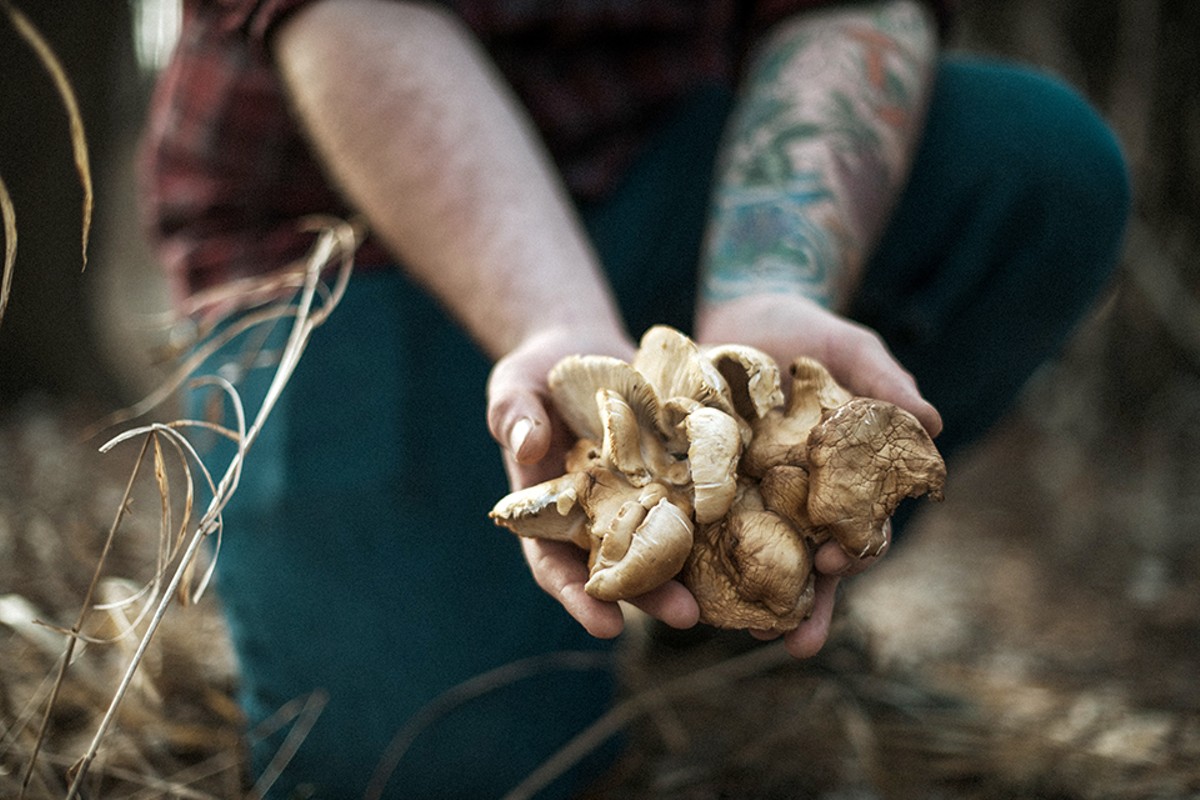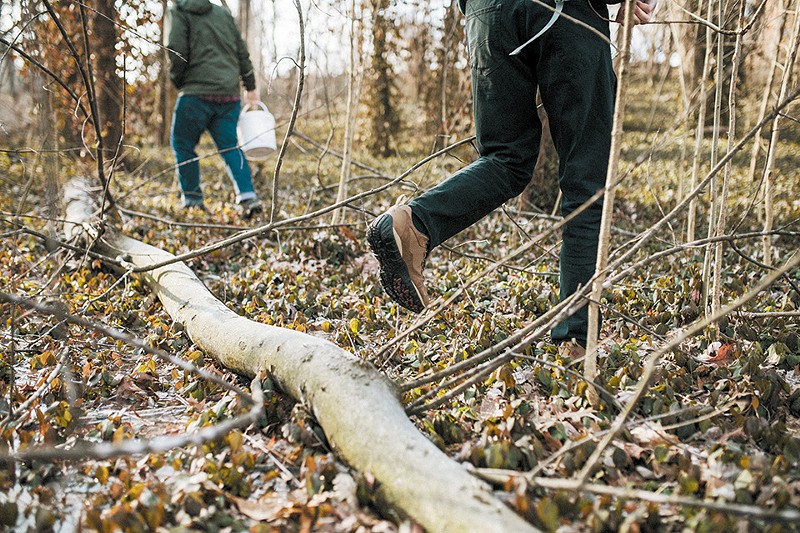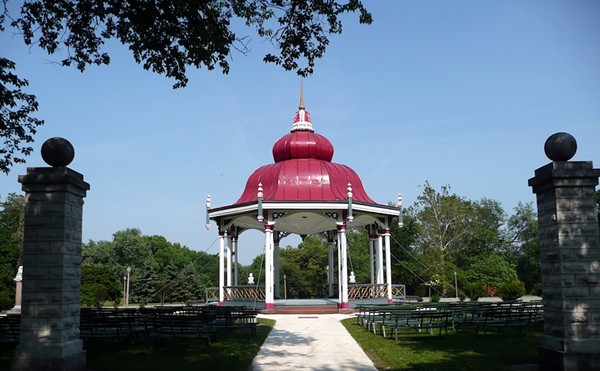Bell and Connoley don't know anything you can't learn yourself. Urban foraging is on the rise in metro areas across the country. Falling Fruit, for example, is an open-source app with more than a million data points marking plants — mostly trees — with fleshy goods. Open it up to St. Louis and you'll find 50 plants listed in Forest Park and Tower Grove alone, from bur oaks to blackberries, maypops to pawpaws.
Connoley bristles, however, at the idea of foraging as a restaurant trend. He thinly acknowledges it as a former fad. "[Chefs] do it for a few years, and then they realize how hard it is and how unreliable it is. That's when you get to the level of authenticity, where you're doing it because you think it's important."
Kara Nielsen, a food trends expert at CCD Innovation, nests foraging — and by extension, Connoley — in the trend of hyper-localism. In 2004, a group of Scandinavian chefs published a manifesto for a new Nordic cuisine, which ignited a global obsession with local ingredients in fine dining. "It was a reaction to continental fine dining and the epitome of the highest-level ingredient being a fancy truffle or caviar, ingredients that were traditional to a French or European mindset," Nielsen says. "Chefs said, 'Look, we can make amazing, creative, delicious food by looking in our own backyards.'" Bell himself cites the Danish René Redzepi, one of the manifesto's signees, as a primary influence.
Still, Nielsen acknowledges there's a difference between chefs buying foraged ingredients and a chef with locust thorns ringing his toque blanche. There's a sort of genuine martyrdom chez Connoley that makes a certain guarantee of authenticity to his customers. When Connoley and Bell go out and handpick the vegetables they serve, there are zero degrees of potential fraud in the distribution chain; they are the distribution chain.
"I've worked with plenty of foragers I would never buy anything from because their ethics are not what I need them to be," Connoley says. "And I'm sure there are people who look at us and say the same thing."
That foraging has no formalized etiquette leaves each gatherer to impose their own. Connoley, for one, has a strict personal code. "For me the number one rule is, if I can see a road, I don't serve it," he says.
Before 2008, when he opened the Curious Kumquat in Silver City, New Mexico, Connoley had never worked in a restaurant. Born and raised in north St. Louis County, he earned a doctorate at Purdue in social psychology of sport and exercise, then moved to Colorado for nonprofit work. By 2003 he ended up in southwest New Mexico at the doorstep of the vast Gila Wilderness. Less than a year later, he opened a grocery called the Curious Kumquat. Eventually, that grocery evolved into a soup-and-salad restaurant, then a celebrated tasting-menu restaurant that earned him a James Beard Award nomination for Best Chef — Southwest.
In a Silver City sweat lodge, Connoley met Doug Simon, a bushy-bearded, scraggly-haired mountain man with a burlap shirt and shoes made of tree bark. Simon had been living in a burrow and surviving off the bounty of the forest for two years, so Connoley asked Simon to take him foraging. Simon became a foraging mentor to Connoley, conversing with the plants as they wandered the Gila. Before long Connoley was introducing foraged foods into his tasting dinners.
Eventually he became a master of the diverse set of ecosystems in the topographically rich New Mexico backcountry. Connoley even taught his dog to hunt morel mushrooms by overturning five bowls on the ground, one of them hiding the rare mushroom. When the dog sniffed the bowl with morels, Connoley rewarded her, until one day the dog led him to morels in the nearby Black Range.
Two years ago, Connoley and his partner decided to move back to St. Louis to return to family. For Connoley, it feels like a test of his mettle. "If you put me, this guy who never worked a day in his life in a restaurant and put me in a big market, what would happen? Could I hold my own, or was it all just fluff and air back in New Mexico?"
The world of Eastern Deciduous foraging Bell has introduced him to is a world of plenty. He can be pickier, no longer relying on his encyclopedic knowledge of where and when desert plants will fruit. "Here it's actually a matter of 'Where can we get the best or the most stuff,' versus just 'Am I going to find anything today?'"

The frozen riverbank they're combing today isn't good enough. There's too much trash on the forest floor. Bell finds some oyster mushrooms. "Next to a can of toxic waste," Connoley says. (It's just a rusty barrel.) He tells a story of two foragers who, on assignment for an acclaimed Chicago restaurant, strolled down the block and snipped cuttings from the flower garden at a bank. The chef bought them, no questions asked. That's why Connoley is personally in the woods, even if that means Bulrush will be closed three days a week.
"Sometimes people say, 'Well, you're serving food that could be tainted.' I'm like, 'OK, I'm taking something from the woods with minimal toxins versus a factory farm animal that we know has been sprayed and given antibiotics and all this other stuff.' I'll take my chances."
Connoley and Bell have to weigh their impact beyond themselves and their customers. When Connoley posted online about finding the tree full of persimmons, someone pushed back. "This woman was saying, 'You're taking the food source for squirrels and other animals.' I think about that all the time, to the point of ridiculousness. I have to debate, 'Can I climb the tree, or could that harm the tree?'"
Connoley's tone here is defensive, almost preemptive. It might be indicative of the fact that his methodology is culturally and sometimes legally liminal. The subject of whose land he's foraging on wrinkles his eyes. Generally, he and Bell forage on private land with express permission from owners, or land owned by nonprofits for which they've been given exclusive access. As for public land, he stresses that he maintains relationships with government land managers to make sure he doesn't overstep. "We actually had an incident last year where we had rights to forage on private land," he says. "I posted some pictures from that land, and another forager said, 'Oh yeah, I saw those and I left those there.' I'm like, 'What the fuck were you doing on this private land?'
"This is a weird strip of land right here, by the way, as far as ownership," he adds, sweeping his arm over the thin strip of woodland of unclear proprietorship.
Missouri Department of Conservation land abuts the strip, and from it you can take a dump truck full of mushrooms, pawpaws, persimmons or anything else, as long as it's for you and not a customer, says MDC Protection Regional Supervisor Chris Morrow. On MDC's website, you can search any conservation area and find its wild-plant-gathering policies. Under state laws, Morrow says, a restaurant "wouldn't be able to take vegetation off of conservation areas." But a hobbyist can.







